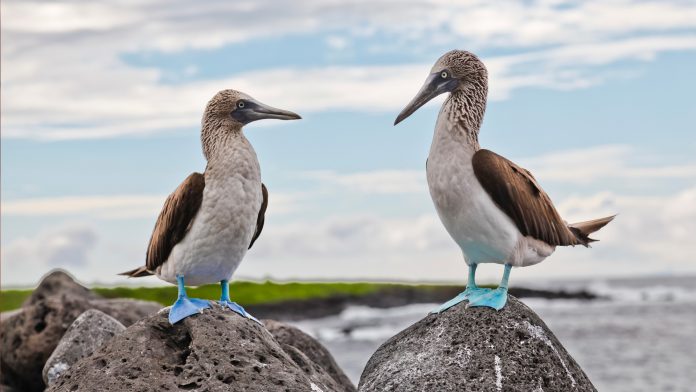New research has revealed how, despite its rocky terrain, volcanic outcrop, limited rainfall and sparse vegetation, the Galápagos is able to sustain its unique ecosystem
The Galápagos Islands, 900 kilometres from the South American mainland, is a significant biological hotspot, known for its unique wildlife, which inspired Charles Darwin’s theory of evolution.
Today, the Galápagos houses one of the largest UNESCO World Heritage Sites and Marine Reserves on Earth.
The Galápagos ecosystem is sustained by a process known as upwelling, where displaced surface waters are replaced by cool, nutrient-rich deep waters. This then stimulates the growth of phytoplankton, allowing the entire ecosystem to thrive.
Despite the key role of upwelling in sustaining the ecosystem, its controlling factors have been unknown prior to this new study. Determining these controls, and their climate sensitivity, is crucial to assessing the resilience of the regional ecosystem against modern climatic change.
Scientists from the University of Southampton National Oceanography Centre and Universidad San Francisco de Quito in Ecuador have used a realistic, high-resolution computer model to study the regional ocean circulation around the Galápagos.
The computer model indicated that the intensity of upwelling around the Galápagos Islands is fuelled by local northward winds, which produce vigorous turbulence at upper-ocean fronts to the west of the islands. The turbulence upwells deep waters to the ocean surface, providing the nutrients needed to sustain the Galápagos ecosystem.
Alex Forryan, one of the researchers at the University of Southampton, said: “Our findings show that Galápagos upwelling is controlled by highly localised atmosphere-ocean interactions. There now needs to be a focus on these processes when monitoring how the islands’ ecosystem is changing, and in mitigating the ecosystem’s vulnerability to 21st century climate change.”
Professor Alberto Naveira Garabato, also of the University of Southampton, who led the research project, said: “This new knowledge of where and how the injection of deep-ocean nutrients to the Galapagos ecosystem happens is informing ongoing plans to expand the Galápagos Marine Reserve, and improve its management against the mounting pressures of climate change and human exploitation.”
The research has been published in Nature Scientific Reports.









